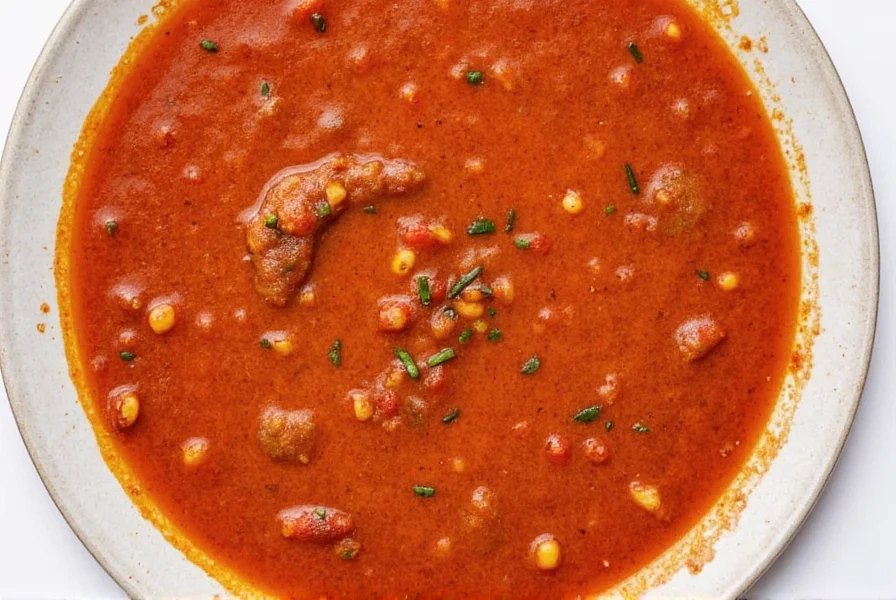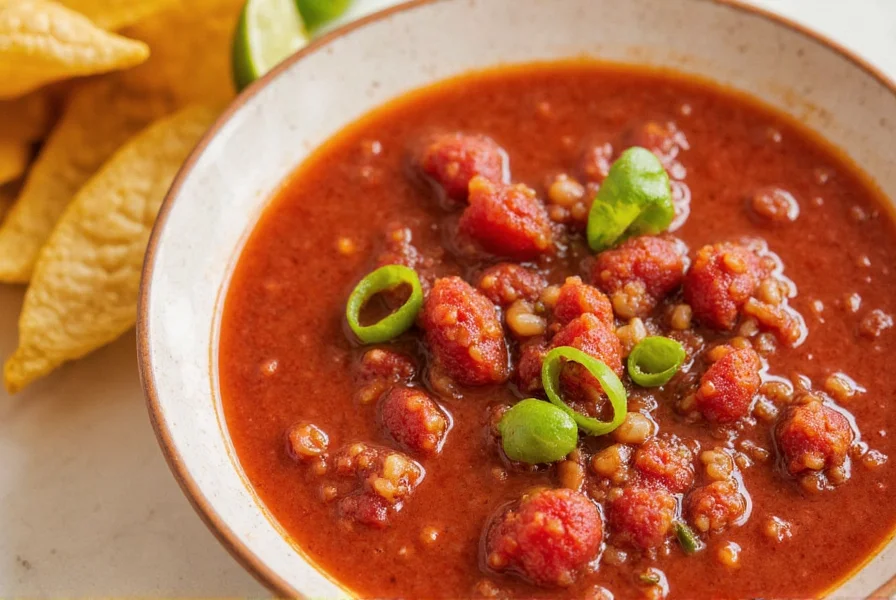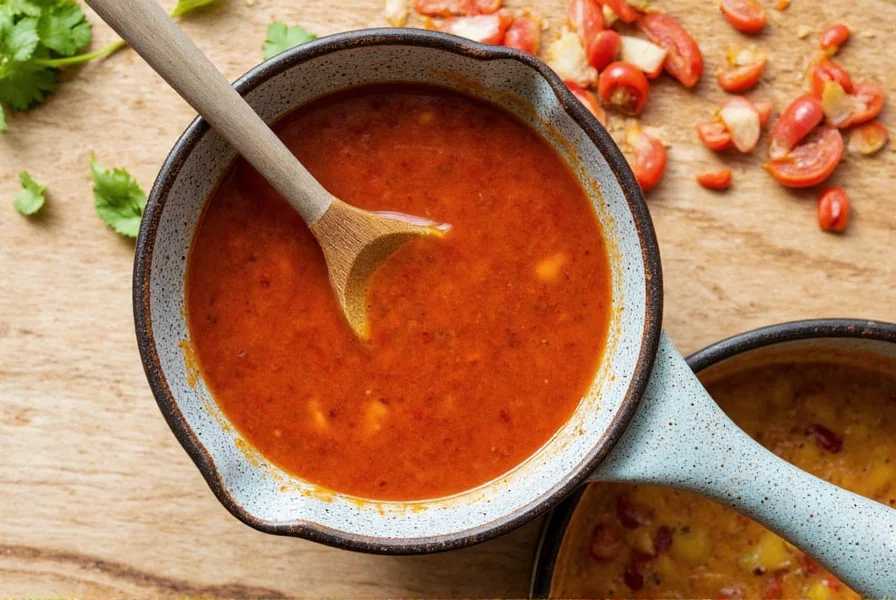Introduction to Sofritos
Sofrito is a foundational flavor base made from sautéed aromatics like onions, garlic, and peppers, used as the foundation for countless dishes across global cuisines. It's the secret to building deep, complex flavors in stews, rice dishes, soups, and more.
- Global Variations of Sofrito
- How to Make a Classic Sofrito at Home
- Spice Blends That Elevate Your Sofrito
- Buying Guide: Tools and Ingredients for Perfect Sofritos
- Visual Comparison Table of Global Sofritos
- Frequently Asked Questions About Sofritos
- Conclusion: Unlock the Flavor Potential with Sofrito
| Cuisine | Main Ingredients | Unique Additions | Signature Dishes |
|---|---|---|---|
| Spanish | Onion, garlic, tomato, bell pepper | Olive oil, paprika (smoked or sweet) | Paella, Fabada Asturiana |
| Puerto Rican | Onion, garlic, culantro, ají dulce | Herbs, citrus zest, annatto oil | Arroz con gandules, pollo guisado |
| Italian | Onion, garlic, celery | Carrots, olive oil, herbs | Ragù alla Bolognese, minestrone |
| Mexican | Tomato, onion, garlic | Chiles, cumin, epazote | Mojo de ajo, mole sauces |
| French (Mirepoix) | Onion, carrot, celery | Butter, thyme, bay leaf | Coq au vin, bouillabaisse |
What Makes Each Version Unique?
- Spanish Sofrito: The use of slow-cooked tomato paste creates a rich, jammy texture. Paprika adds depth, while olive oil ties it all together.
- Puerto Rican Sofrito: Known as recaíto, it includes fresh culantro (a more intense cousin of cilantro) and mild chiles. Annatto oil gives it a vibrant red color and earthy warmth.
- Italian Sofrito: Often called soffritto, it uses carrots for sweetness and builds flavor slowly over low heat.
- Mexican Sofrito: More acidic and fiery than others, it often includes roasted tomatoes and dried chiles for a smoky kick.
- French Mirepoix: Butter-based and used in classic French cuisine, it's the backbone of many braises and stews.

How to Make a Classic Sofrito at Home
Ready to start building your own sofrito magic? Here's a foolproof method for a Spanish-style base:
Classic Spanish Sofrito Recipe
- 2 large onions, finely chopped
- 4 cloves garlic, minced
- 2 red bell peppers, diced
- 2 ripe tomatoes, peeled and grated (or canned)
- 3 tbsp extra virgin olive oil
- 1 tsp smoked paprika
- Salt to taste
- Heat olive oil in a heavy-bottomed pot over medium-low heat.
- Add onions and cook slowly until translucent (about 10–15 minutes).
- Add garlic and bell peppers; stir gently without browning.
- Add tomatoes and simmer for another 20–30 minutes until thick and jammy.
- Stir in smoked paprika and season with salt.
- Cool and store in freezer-safe containers for up to 3 months.

Pro Tip:
If you want a smoother texture, blend everything after cooking using an immersion blender or countertop blender.
Spice Blends That Elevate Your Sofrito
Spices are the unsung heroes of any great sofrito. While they might not be the main players, their impact is undeniable. Here's how to upgrade your sofrito game with spices:
- Spanish Style: Smoked paprika (pimentón), saffron threads
- Puerto Rican: Ground annatto (achiote), oregano, coriander
- Mexican: Cumin, Mexican oregano, dried chipotle
- Italian: Fennel seeds, rosemary, basil
- French: Thyme, tarragon, bay leaves

Buying Guide: Tools and Ingredients for Perfect Sofritos
To get the most out of your sofrito, invest in quality tools and ingredients. Here's a list of must-haves:
Essential Kitchen Tools
- Cast Iron or Stainless Steel Pot: Ensures even heat distribution and prevents burning.
- Microplane Zester: Great for grating garlic, ginger, or citrus zest into your mix.
- Immersion Blender: For smooth, lump-free results without transferring hot contents.
- Airtight Freezer Containers: Sofrito freezes well—make big batches and save time later!
Top Shelf Ingredients
| Product | Description | Features | Best For | Occasions |
|---|---|---|---|---|
| La Chinata Smoked Paprika | From Extremadura, Spain — deep smoky flavor | Natural, organic, no additives | Spanish sofritos, grilled meats | Everyday cooking, paella nights |
| Goche Reyes Achiote Oil | Bold red color and earthy undertones | Authentic Puerto Rican flavor base | Recaíto, rice dishes | Fiestas, Caribbean-inspired meals |
| Goya Tomato Paste | Thick, concentrated, and versatile | Easily accessible in Latin markets | Any sofrito needing richness | Slow-cooked stews, soups |
| McCormick Cumin | Pungent, warm, and slightly bitter | Powdered for easy integration | Mexican, Middle Eastern sofritos | Tacos, chili nights |
| Herbes de Provence Blend | Lavender-infused herb mixture | Adds floral complexity | French-style mirepoix | Weekend roasts, casseroles |

Visual Comparison Table of Global Sofritos
Want a quick cheat sheet for choosing the right sofrito base for your next dish? Here's a visual comparison to help you decide:
| Region | Primary Base | Texture | Flavor Profile | Best Uses |
|---|---|---|---|---|
| Spain | Tomato, onion, pepper | Thick, chunky to smooth | Smoky, sweet, umami | Paella, stews |
| Puerto Rico | Garlic, culantro, green bell pepper | Herby, semi-smooth | Earthy, bright, peppery | Rice dishes, marinades |
| Italy | Onion, carrot, celery | Soft, aromatic | Sweet, savory, herbal | Pastas, ragùs |
| Mexico | Tomato, onion, garlic | Chunky to pureed | Acidic, spicy, rich | Soups, moles, tacos |
| France | Onion, carrot, celery | Soft, buttery | Delicate, balanced, fragrant | Braises, stocks, sauces |
Frequently Asked Questions About Sofritos
What exactly is sofrito and why is it important in cooking?
Sofrito is a flavor base made from sautéed aromatic ingredients like onions, garlic, peppers, and sometimes tomatoes. It's important because it builds the foundational flavor for countless dishes across many cuisines. Think of it as the 'secret sauce' that gives depth and complexity to stews, soups, rice dishes, and more. The slow cooking process allows the natural sugars to caramelize and the flavors to meld together, creating a rich base that elevates the entire dish.
Can I make sofrito without tomatoes?
Absolutely! While many Spanish and Italian versions include tomatoes, other variations like the Puerto Rican recaíto or French mirepoix don't use them at all. The Puerto Rican version focuses on garlic, culantro, and ají dulce peppers, while the French mirepoix uses onion, carrot, and celery. Tomatoes add acidity and richness, but sofrito can be made successfully without them depending on the cuisine you're working with.
How long does homemade sofrito last in the refrigerator?
Properly stored in an airtight container, homemade sofrito will last about 5-7 days in the refrigerator. For longer storage, freezing is recommended. When frozen in portion-sized containers or ice cube trays, sofrito can maintain its quality for up to 3-6 months. Just make sure to remove as much air as possible from the storage container to prevent freezer burn.
What's the difference between sofrito and mirepoix?
While both are aromatic bases, they have key differences. Sofrito typically includes tomatoes and is cooked in olive oil (especially in Spanish and Latin American cuisines), resulting in a richer, more complex flavor. Mirepoix (French) consists of onion, carrot, and celery in a 2:1:1 ratio, cooked in butter, and serves as a more neutral base for sauces and soups. Sofrito is generally cooked longer to develop deeper flavors, while mirepoix is often just softened before adding other ingredients.
Can I customize sofrito to my taste preferences?
Definitely! One of the beauties of sofrito is its versatility. You can adjust the ratios of ingredients based on your preferences - more garlic for intensity, less pepper for milder flavor, or additional herbs for complexity. Some cooks add ingredients like roasted red peppers, extra tomatoes, or even a splash of wine to create their signature version. The basic technique remains the same, but the specific ingredients can be adapted to suit your taste.
What dishes can I use sofrito in?
Sofrito is incredibly versatile! Use it as the base for rice dishes like paella or arroz con gandules, in soups and stews, as a foundation for sauces (like tomato sauce or mole), to flavor beans, or even as a marinade for meats. You can stir a spoonful into scrambled eggs, mix it into ground meat for burgers, or use it to boost the flavor of store-bought sauces. Any dish that starts with sautéed aromatics could benefit from homemade sofrito.
Is sofrito the same as recaito?
While similar, they're not exactly the same. Recaito is specifically the Puerto Rican version of sofrito that doesn't contain tomatoes. It's made primarily with culantro (recaito herb), cilantro, onions, garlic, and ají dulce peppers. Traditional Spanish sofrito usually includes tomatoes, while recaito does not. Both serve the same purpose as flavor bases but have distinct ingredient profiles and color (recaito is green, while tomato-based sofritos are red).
Conclusion: Unlock the Flavor Potential with Sofrito
The sofrito isn't just a background player—it's the heart of so many iconic dishes around the world. From the smoky Spanish version to the zesty Puerto Rican recaíto, each culture has made this humble base their own.
Whether you're a seasoned chef or a curious home cook, learning how to make and customize your own sofrito can transform your meals from ordinary to extraordinary.
So, grab those onions, garlic, and your favorite spices—and start building flavor one batch at a time. After all, every great dish starts with a great base. And there's no better place to begin than with a sofrito.












 浙公网安备
33010002000092号
浙公网安备
33010002000092号 浙B2-20120091-4
浙B2-20120091-4